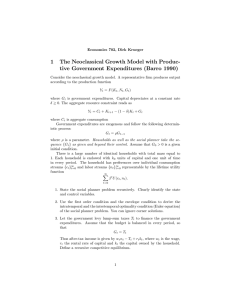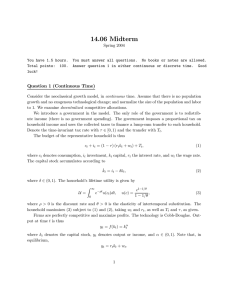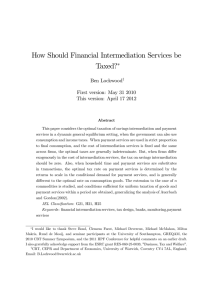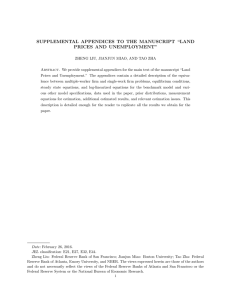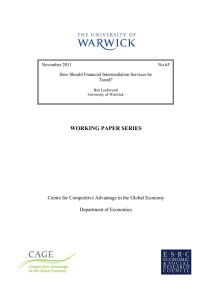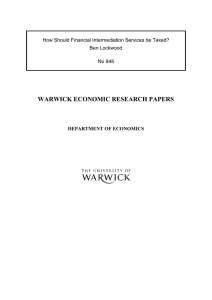Cole’s problem Prelim Exam June 2012
advertisement
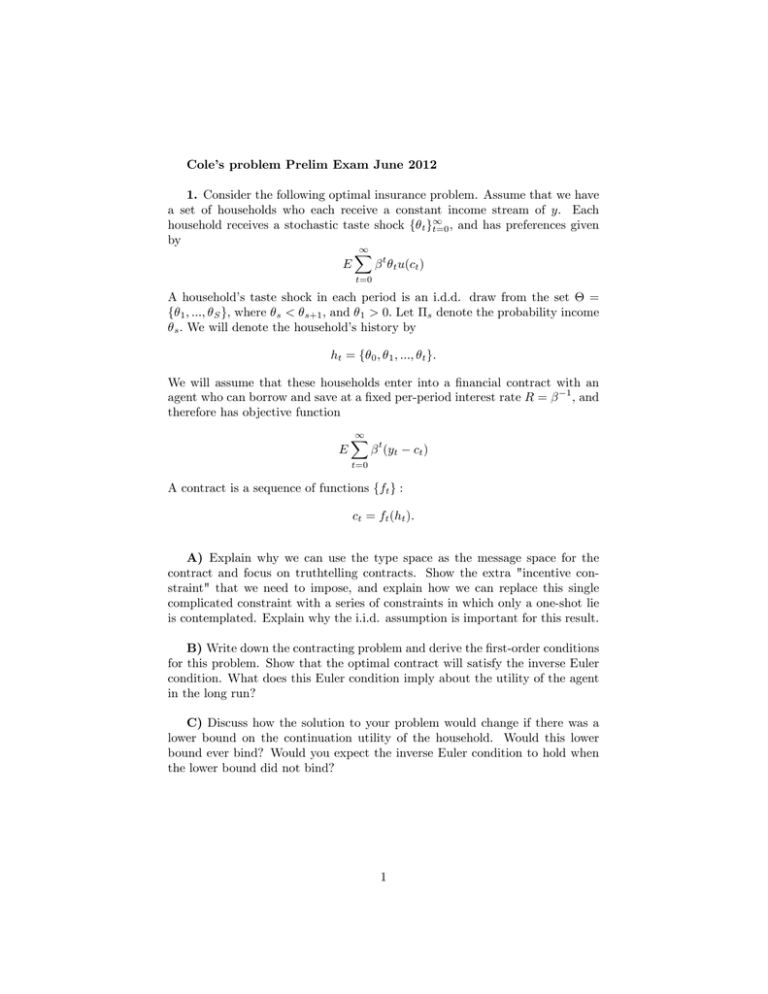
Cole’s problem Prelim Exam June 2012 1. Consider the following optimal insurance problem. Assume that we have a set of households who each receive a constant income stream of y. Each household receives a stochastic taste shock f t g1 t=0 ; and has preferences given by 1 X t E t u(ct ) t=0 A household’s taste shock in each period is an i.d.d. draw from the set = f 1 ; :::; S g; where s < s+1 ; and 1 > 0: Let s denote the probability income s : We will denote the household’s history by ht = f 0 ; 1 ; :::; t g: We will assume that these households enter into a …nancial contract with an 1 agent who can borrow and save at a …xed per-period interest rate R = ; and therefore has objective function E 1 X t (yt ct ) t=0 A contract is a sequence of functions fft g : ct = ft (ht ): A) Explain why we can use the type space as the message space for the contract and focus on truthtelling contracts. Show the extra "incentive constraint" that we need to impose, and explain how we can replace this single complicated constraint with a series of constraints in which only a one-shot lie is contemplated. Explain why the i.i.d. assumption is important for this result. B) Write down the contracting problem and derive the …rst-order conditions for this problem. Show that the optimal contract will satisfy the inverse Euler condition. What does this Euler condition imply about the utility of the agent in the long run? C) Discuss how the solution to your problem would change if there was a lower bound on the continuation utility of the household. Would this lower bound ever bind? Would you expect the inverse Euler condition to hold when the lower bound did not bind? 1





